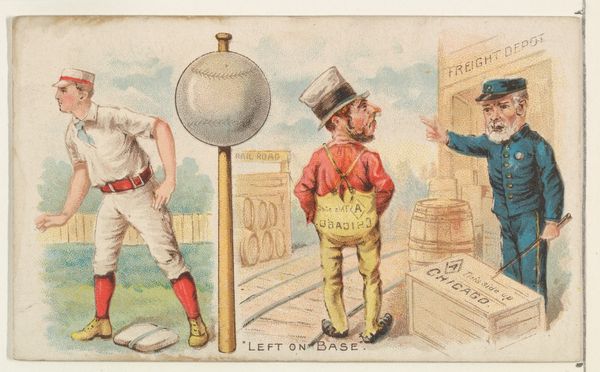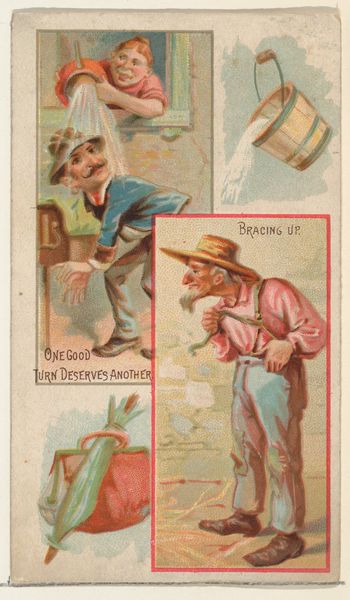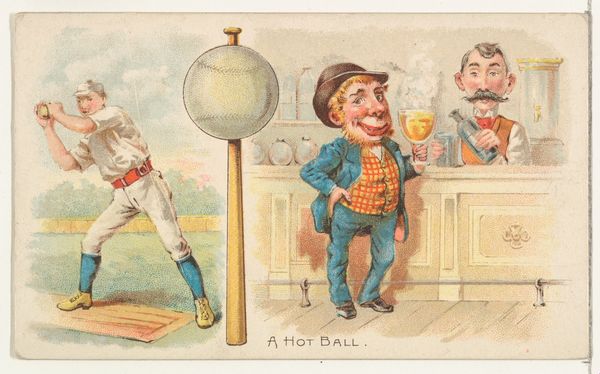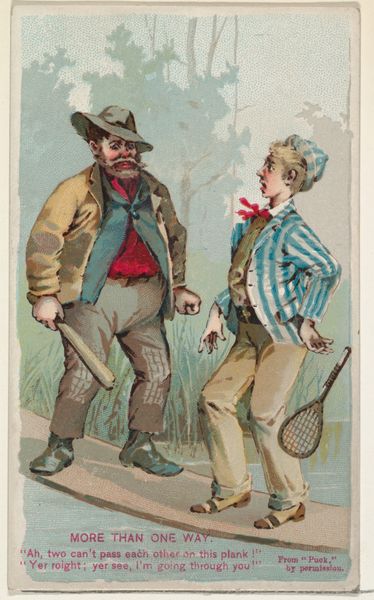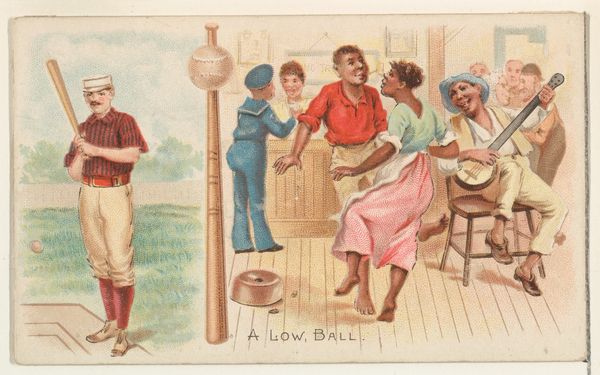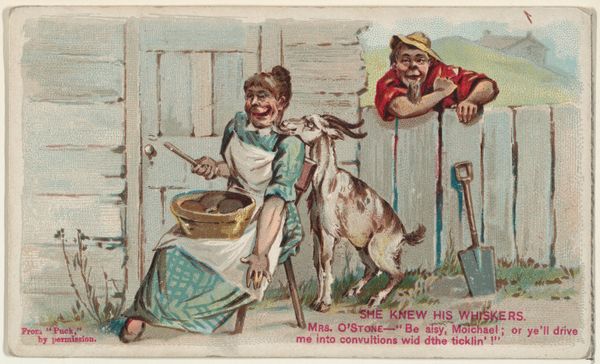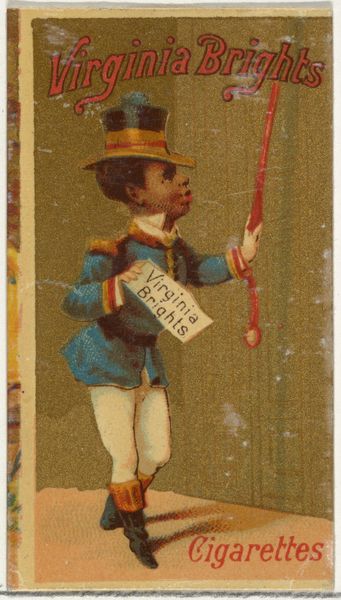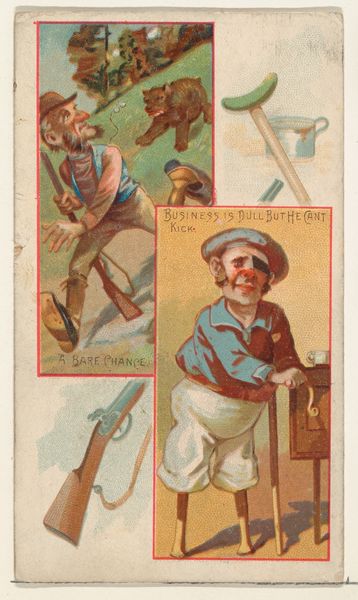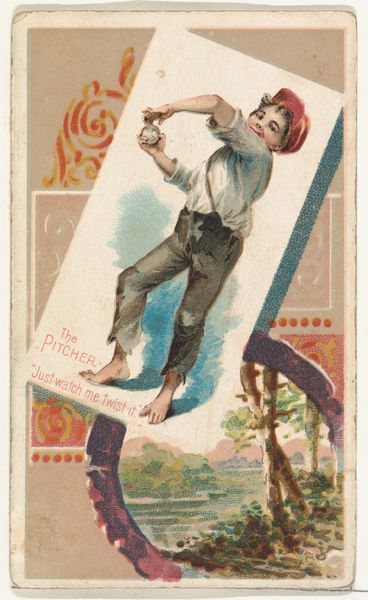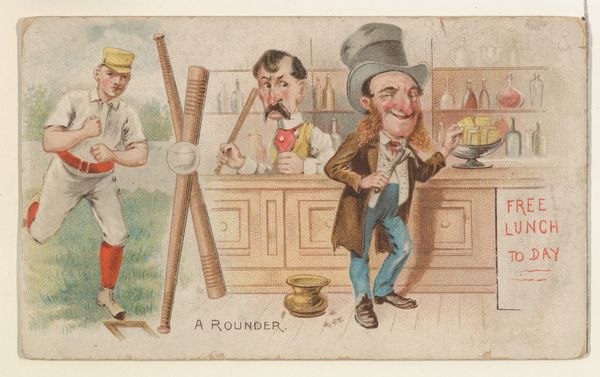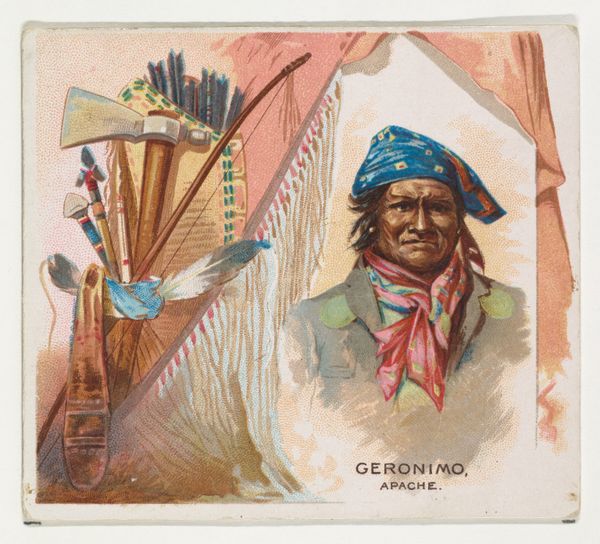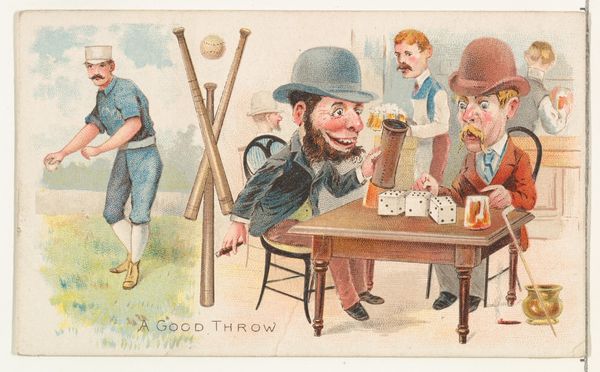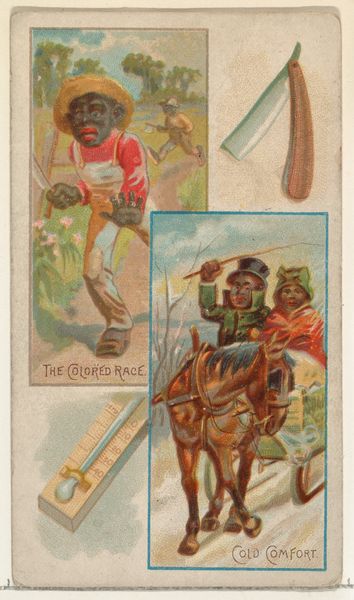
A Big Hit, from the Talk of the Diamond set (N135) issued by Duke Sons & Co., a branch of the American Tobacco Company 1888
0:00
0:00
drawing, print
#
drawing
# print
#
impressionism
#
caricature
#
men
#
genre-painting
Dimensions: Sheet: 2 1/2 × 4 1/8 in. (6.4 × 10.4 cm)
Copyright: Public Domain
Editor: This is "A Big Hit," a print from the "Talk of the Diamond" series, created in 1888 by W. Duke, Sons & Co. It depicts a baseball scene with…well, with some rather troubling imagery. The composition is quite odd, very horizontal and divided into distinct zones. What jumps out to you, in terms of its structure and visual language? Curator: Immediately, the formal arrangement strikes me. The tripartite division suggests a sequential narrative, each segment a distinct visual proposition. Note the chromatic harmony; a restricted palette, predominantly warm tones, binds the composition. The artist’s deployment of line is also significant. See how it defines the figures, almost like a contour drawing filled with watercolor washes. It imparts an impression of lightness, a certain… ephemeral quality. Editor: Yes, I noticed how the limited color palette creates that visual harmony, even despite the discordant subject matter. But what about the racial caricatures? Can formal analysis really address the ethical dimensions of such a depiction? Curator: Indeed, focusing strictly on formal aspects provides one lens through which to examine it. If you look at it, each panel possesses the caricature, but observe how each racial type differs: the hurried young athletic player; a gleeful dancing minstrel type; and someone tallying wins at a makeshift station. The caricatured qualities aren’t as significant individually but speak more to each of their actions within the composition’s overall meaning. Can the contrast alone between player and businessman offer some interpretation of cultural context? Editor: I see what you mean. Looking solely at the structural components, that rhythmic contrast is fascinating. Curator: Precisely. Understanding how the elements interact – the shapes, the colors, the lines – contributes to understanding its total effect and the possible meaning for the viewer.
Comments
No comments
Be the first to comment and join the conversation on the ultimate creative platform.
